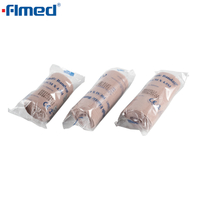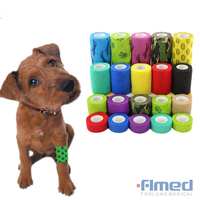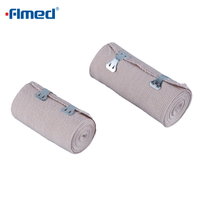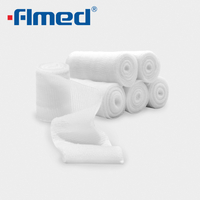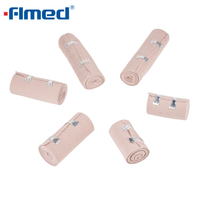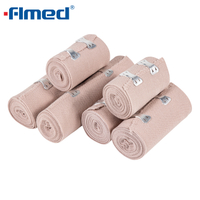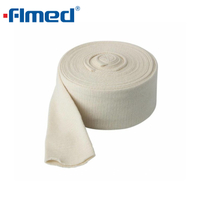
Wound care is a critical aspect of medical treatment, whether in hospitals, clinics, or home settings. One of the fundamental tools in effective wound management is the wound bandage. While many patients and caregivers focus on the bandage’s size, absorbency, or comfort, one attribute is absolutely non-negotiable: sterility. Maintaining sterility in wound bandages is essential to prevent infections, promote faster healing, and ensure patient safety. This article explores why sterile wound bandages are vital, the risks of using non-sterile products, and how to choose the right sterile bandages for different wound types.
Understanding Sterility in Wound Bandages
Sterility means that a product is completely free from any living microorganisms such as bacteria, fungi, viruses, or spores. In wound care, this is crucial because wounds, especially open or surgical wounds, provide direct entry points for pathogens. If a wound bandage is contaminated, it can introduce harmful microbes to the wound site, leading to infection, delayed healing, and serious complications.
Sterile wound bandages are manufactured in controlled environments and undergo rigorous sterilization processes—commonly using methods such as gamma irradiation, ethylene oxide treatment, or autoclaving. These processes ensure that every bandage is free from microbial contamination before being sealed in sterile packaging.
Why Sterility Is Essential in Wound Care
1. Infection Prevention
Infections rank among the most frequent and serious complications encountered in wound management. A non-sterile bandage can act as a vector, introducing harmful bacteria such as Staphylococcus aureus or Pseudomonas aeruginosa directly into the wound site. These bacteria can trigger a cascade of adverse effects including redness, swelling, pus formation, persistent pain, and in severe cases, systemic infections like sepsis, which can be life-threatening.
Using sterile wound bandages acts as the frontline defense by:
Creating a physical barrier that blocks external contaminants including dust, dirt, and microbes from entering the wound.
Preventing the colonization and proliferation of microorganisms on the wound surface, which could otherwise hinder healing.
Significantly reducing the risk of both localized infections and infections that spread throughout the body.
By maintaining this sterile environment, these bandages play a crucial role in minimizing complications that can lead to prolonged hospital stays, higher medical costs, and increased patient morbidity or mortality.
2. Promoting Faster and Safer Healing
A sterile wound environment is fundamental to allowing the body’s natural healing processes to operate efficiently. When infections are avoided, the immune system can concentrate its resources on tissue regeneration and repair rather than battling invading pathogens. This balance results in:
Faster wound closure as cells can migrate and proliferate without obstruction.
Reduced inflammation and pain, leading to a more comfortable recovery experience for patients.
Lower risk of excessive scarring and improved functional outcomes, enhancing both the aesthetic and practical aspects of wound healing.
Moreover, sterile wound bandages contribute to maintaining an optimal moisture balance. They absorb excess fluids such as blood and exudate while permitting adequate air circulation. This moisture regulation prevents the wound from drying out or becoming overly wet—both of which can delay healing—and thus supports a favorable healing microenvironment.
3. Protection for Vulnerable Patient Populations
Certain patient groups, including the elderly, individuals with diabetes, and those with compromised immune systems, face a heightened risk of wound infections due to reduced healing capacity and impaired immune responses. For these vulnerable populations, the use of sterile wound bandages is not merely recommended but essential to prevent infections that could quickly escalate and cause serious complications.
In surgical contexts, sterile dressings are indispensable for protecting incisions from contamination. Post-operative wounds are particularly susceptible to infection, which can jeopardize recovery and even necessitate additional surgical interventions. Sterile bandages help safeguard these delicate sites, reducing infection rates and promoting smooth, complication-free healing.
In summary, maintaining sterility in wound care is a fundamental pillar that ensures infection control, accelerates recovery, and protects the most vulnerable patients—ultimately supporting better clinical outcomes and enhancing patient safety.
![.forlong .forlong]()
Risks Associated with Non-Sterile or Improperly Sterile Bandages
Using bandages that are non-sterile or whose sterility has been compromised can have serious consequences:
Increased Infection Risk: The introduction of pathogens can cause wound infections that are difficult to treat and may require antibiotics or further surgery.
Delayed Healing: Infection and inflammation slow down tissue repair, extending recovery times and patient discomfort.
Cross-Contamination: Non-sterile bandages can transfer microbes from one wound to another or from contaminated surfaces to wounds.
Compromised Medical Procedures: In surgeries or invasive procedures, sterile bandages are part of aseptic protocols to prevent hospital-acquired infections.
Patient Dissatisfaction and Liability: Infection complications can lead to dissatisfaction, legal claims, and damage to the healthcare provider’s reputation.
Because of these risks, regulatory bodies like the FDA and ISO have stringent guidelines to ensure that medical wound dressings meet strict sterility and safety standards.
Choosing the Right Sterile Wound Bandage
Not all wounds are the same, and bandages must be chosen based on wound type, location, and patient needs:
Absorbency: For heavily exuding wounds, high-absorbency cotton bandages are needed.
Size and Shape: Bandages come in various sizes—from small pads for minor cuts to large sheets for surgical wounds.
Breathability: Materials should allow airflow but prevent contaminants from entering.
Adhesion: Some bandages come with adhesive edges; others are non-stick and require additional securing methods.
Hypoallergenic Properties: Especially important for sensitive skin to prevent irritation.
Sterility Confirmation: Ensure products are certified sterile and that packaging is intact before use.
Healthcare professionals and consumers should source bandages from trusted manufacturers that adhere to international sterility and quality standards.
The Role of Sterile Wound Bandages Beyond Hospitals
Sterile wound bandages are not only for clinical use. They play a vital role in first aid kits at homes, workplaces, sports facilities, and emergency response vehicles. Immediate application of a sterile bandage to a fresh wound helps prevent infection from the outset, potentially avoiding complications that require medical intervention.
For those managing chronic wounds, such as diabetic ulcers or pressure sores, sterile bandages are a cornerstone of daily care to prevent infection and promote healing.
Innovations in Sterile Wound Bandages
The field of wound care is evolving with advancements such as:
Antimicrobial Bandages: Embedded with silver ions or other agents to actively reduce bacterial growth.
Moisture-Controlling Dressings: Designed to maintain an optimal healing environment.
Biodegradable and Eco-Friendly Materials: Offering sustainability without compromising sterility or efficacy.
Improved Adhesives: Reducing skin trauma during dressing changes.
These innovations continue to enhance the role of sterile wound bandages in patient care.
Conclusion
Sterility in wound bandages is not just a manufacturing standard—it is a critical requirement that underpins safe and effective wound healing. From preventing infections to supporting tissue repair, sterile wound bandages are indispensable in modern healthcare. Whether for surgical incisions, acute injuries, or chronic wound management, choosing high-quality sterile bandages ensures patient safety, comfort, and better clinical outcomes.
For healthcare providers, caregivers, and individuals looking for reliable sterile wound bandage solutions, partnering with reputable manufacturers is key. To explore a wide range of premium sterile wound bandages and medical cotton products that meet international standards, visit www.forlongmedical.com. Their expertise and commitment to quality make them a trusted source for hospitals, clinics, and distributors worldwide.

 English
English

